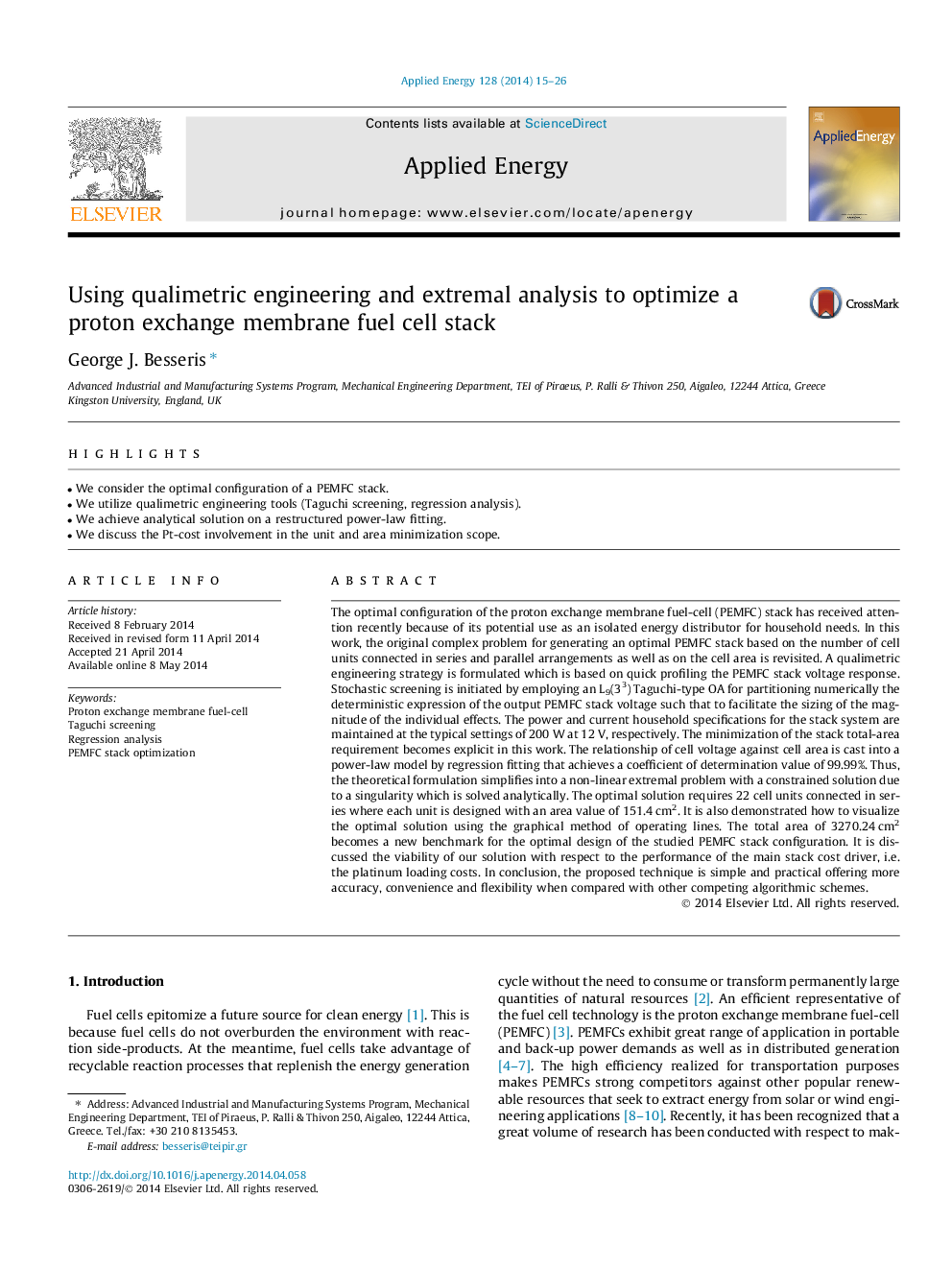| Article ID | Journal | Published Year | Pages | File Type |
|---|---|---|---|---|
| 242660 | Applied Energy | 2014 | 12 Pages |
•We consider the optimal configuration of a PEMFC stack.•We utilize qualimetric engineering tools (Taguchi screening, regression analysis).•We achieve analytical solution on a restructured power-law fitting.•We discuss the Pt-cost involvement in the unit and area minimization scope.
The optimal configuration of the proton exchange membrane fuel-cell (PEMFC) stack has received attention recently because of its potential use as an isolated energy distributor for household needs. In this work, the original complex problem for generating an optimal PEMFC stack based on the number of cell units connected in series and parallel arrangements as well as on the cell area is revisited. A qualimetric engineering strategy is formulated which is based on quick profiling the PEMFC stack voltage response. Stochastic screening is initiated by employing an L9(33) Taguchi-type OA for partitioning numerically the deterministic expression of the output PEMFC stack voltage such that to facilitate the sizing of the magnitude of the individual effects. The power and current household specifications for the stack system are maintained at the typical settings of 200 W at 12 V, respectively. The minimization of the stack total-area requirement becomes explicit in this work. The relationship of cell voltage against cell area is cast into a power-law model by regression fitting that achieves a coefficient of determination value of 99.99%. Thus, the theoretical formulation simplifies into a non-linear extremal problem with a constrained solution due to a singularity which is solved analytically. The optimal solution requires 22 cell units connected in series where each unit is designed with an area value of 151.4 cm2. It is also demonstrated how to visualize the optimal solution using the graphical method of operating lines. The total area of 3270.24 cm2 becomes a new benchmark for the optimal design of the studied PEMFC stack configuration. It is discussed the viability of our solution with respect to the performance of the main stack cost driver, i.e. the platinum loading costs. In conclusion, the proposed technique is simple and practical offering more accuracy, convenience and flexibility when compared with other competing algorithmic schemes.
